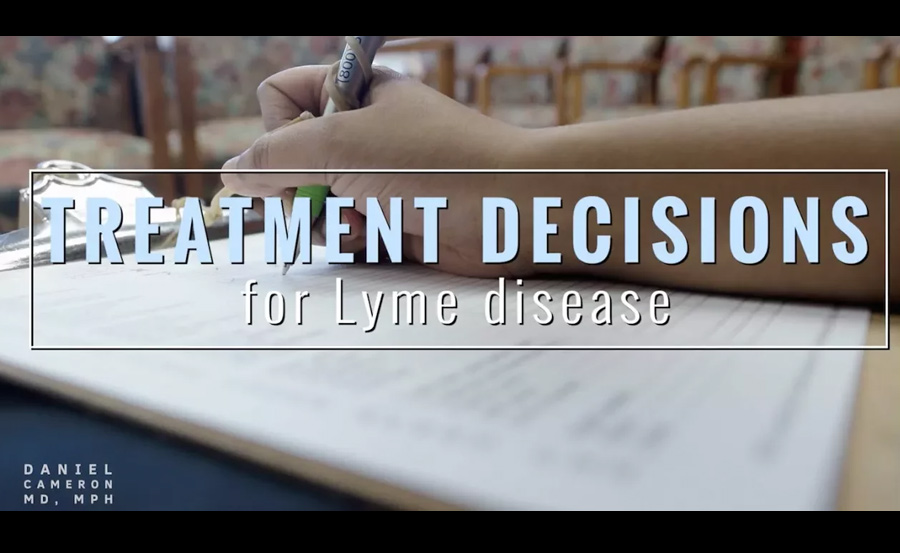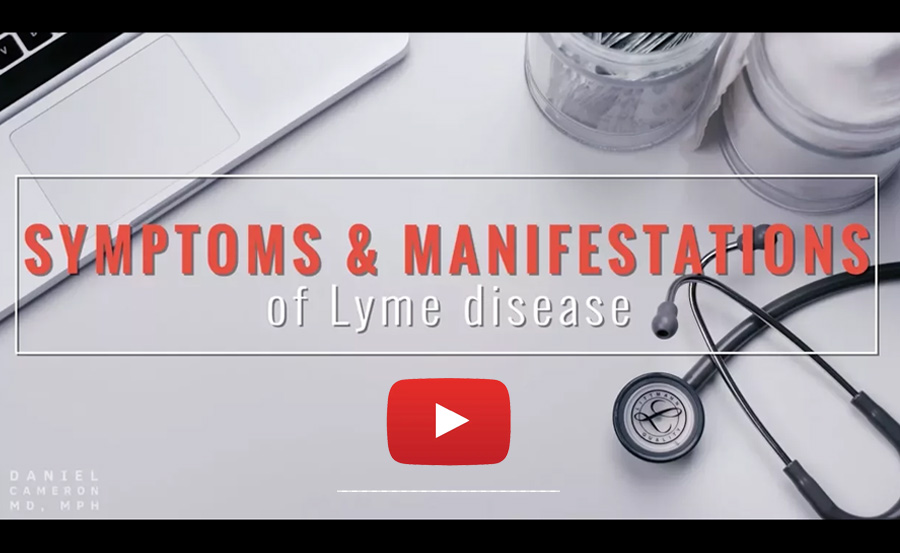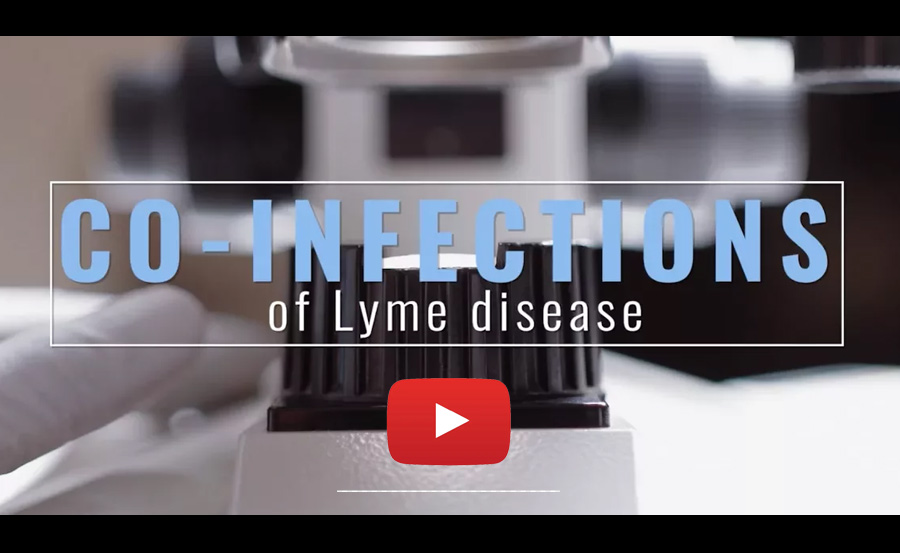Lyme Disease Videos
Lyme Disease
Treatment Decisions for Lyme Disease

Unfortunately, there simply isn’t a one-size-fits-all treatment protocol for patients infected with Lyme disease and/or co-infections. This is why it’s critical for physicians treating Lyme disease to invest time with patients, thoroughly understand their medical history and to closely monitor symptoms and treatment response. With that in mind, there are currently two different treatment approaches for Lyme disease.
The Infectious Disease Society of America (IDSA) and the International Lyme and Associated Diseases Society (ILADS) has each published their own set of evidence-based treatment guidelines. IDSA guidelines recommend a short course of antibiotics, typically 14 to 30 days. IDSA argues that the Borrelia burgdorferi bacteria does not persist in a patient beyond this timeframe and that lingering symptoms are the result of an ongoing immune response and not the result of an active infection. It also cites scientific evidence claiming treatments beyond 30 days are ineffective, unnecessary and even dangerous.


IDSA physicians will stop treatment after 30 days even if symptoms remain. However, there is an additional 30 days of treatment recommended for patients with Lyme arthritis.
On the contrary, ILADS offers its own scientific data to show that a longer course of antibiotics is required to eradicate the bacteria. ILADS recognizes that a month of treatment may be sufficient for patients in the acute stage of Lyme disease but in cases where the spirochete has disseminated and the disease has advanced, a 30-day treatment regimen is inadequate.
ILADS guidelines recommend additional antibiotics until a patient’s symptoms have been resolved. Treating Lyme disease and its advanced stage can be complicated based on the complexity of the organism itself, the differences in each patient’s immune system, the length of time infected and the possible presence of other co-infections transmitted by the same tick. However, there are several choices in treating Lyme disease which include oral, intravenous and intramuscular antibiotic options.
Other options may include, sequential antibiotic therapy, higher doses of antibiotics, taking antibiotics for a longer period of time, a combination of antibiotics, retreatment, as well as, diagnosing and treating co-infections. Some specific antibiotics used in treating Lyme disease are Doxycycline, Minocycline, Amoxicillin, Cefuroxime, Azithromycin and Clarithromycin.
"Unfortunately, there simply isn’t a one-size-fits-all treatment protocol for patients infected with Lyme disease and/or co-infections. This is why it’s critical for physicians treating Lyme disease to invest time with patients.”
There are additional actions that may also aid in treating Lyme disease such as avoiding alcohol, simple and processed sugars, exercising is tolerated, counseling for Jarish herxheimer reaction, managing symptoms, monitoring and reducing the risk of an adverse event and reducing stress.
However, there is a chance of side effects such as Clostridium difficile-associated diarrhea. It is important to note the possible benefit of taking probiotics when treating Lyme disease. In one study, probiotic use significantly reduced the risk of developing C. diff by 60.5%. Other steps include measures of blood counts, chemistry’s and liver function tests.
In some cases a specialist might be advised. Remember choosing a treatment option should be a shared decision between physicians and their patients; also there should be regular follow-up visits to re-assess a patient’s response to treatment.



